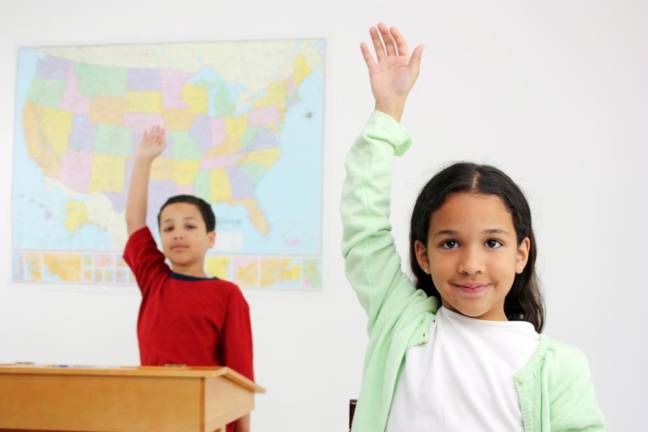Chronic absenteeism plagues local schools
At many local school districts, over 20% of students missed 18 or more days of school in recent years – a sharp increase from pre-pandemic data.

Post-pandemic, schools across the nation have struggled to get students back in the classroom. Nearly one in four students nationwide were chronically absent – missing 10% or more school days – in the 2022-2023 school year. It’s an improvement from the year prior, when approximately 30% of students were chronically absent.
In New York, New Jersey and Pennsylvania the academic year is 180 days; to be considered “chronically absent,” a student must miss a minimum of 18 days of school.
Absenteeism rates in New Jersey schools
Absenteeism rates in New York schools
Absenteeism rates in Delaware Valley School District
Playing hooky or playing it safe?
Local administrators say there is not one specific reason why their schools have seen such a sharp increase in absences post-pandemic.
“I think that a key piece of this is that kids are absent from school for many, many, many different reasons,” said Eric Hassler, Monroe-Woodbury Central School District’s assistant superintendent of curriculum and instruction. “It’s not like people are just more carefree about school. People may be out due to illness, or due to a variety of factors or challenges.”
And nowadays, parents may just be more prone to keeping their kids home if they show mild symptoms. “Through the majority of the pandemic...we were telling families: ‘If your kids are sick, or if you have any inkling that they that they may not be well, do not send them to school,’” explained Jayson Pope, Delaware Valley School District’s assistant superintendent. The pandemic also brought a heightened sense of awareness about mental health, and today, Pope thinks parents are more likely to let their kids take a mental health day if they’re struggling.
Breaking the habit
Pope said some students and families may have trouble getting back into the habit of physically getting to school each day – especially those who, in the Delaware Valley School District, opted for fully remote learning in the 2021 school year.
“After not having been in school for a year and a half, I think it was really tough to get a certain segment of our kids just wanting to come, because they’d been away from it for so long,” said Pope. “So I think there were families that were that were fighting that battle; they were having trouble getting their kids out of the house, and on the bus and into school because they had fallen into that routine of not having to be in school.”
Parents and students may also feel more relaxed about missing a school day because of the online learning resources the pandemic put in place. Pre-pandemic, if a student missed a day, it was significantly harder to catch up on missed lessons and assignments. Today, many teachers are still using Google classroom and other online resources adopted during the pandemic.
“I have four kids from middle school through high school, and I can see that with my own kids,” said Matthew Kravatz, Monroe Woodbury’s assistant superintendent of curriculum and instruction. If his kids miss a day because they’re sick, “they’ll log on and they can see every single thing that they’re missing, and they come back the next day and they feel like I didn’t skip a beat.”
Getting back to school
“Yes, chronic absenteeism is up post-COVID from pre-COVID – and we want kids in school,” said Hassler “We believe the best way for kids to learn is for them to be in school.”
On top of over-communicating absences with parents – sending emails, texts, letters, and eventually making visits home – some districts are taking extra measures to try to tamp down soaring absenteeism. At Delaware Valley School District, administrators have implemented extra summer programs, counseling opportunities, and after school programs to support students who may have fallen behind or struggled during the pandemic.
His district went from a chronic absentee rate of 31% in 2022, to 16% in 2023.
“I think putting more of a focus on that moving forward was very key in getting our kids to buy in more, and getting them back into the routine,” said Pope.
“I think the expectation that school was going to reopen as normal, with no zoom, with no interruptions, and everybody would just go back to showing up every single day, I think that was unrealistic for some folks,” said Pope. “I think it was almost like behavior that needed to be relearned, and in schools, we needed to do a better job of kind of re-engaging our kids and getting them back into that routine”
“I think that a key piece of this is that kids are absent from school for many, many, many different reasons. It’s not like people are just more carefree about school. People may be out due to illness, or due to a variety of factors or challenges.”
- Eric Hassler, Monroe-Woodbury Central School District’s assistant superintendent of curriculum and instruction














